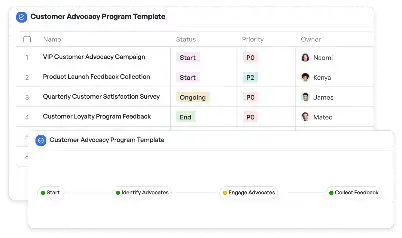DFT Coverage Optimization Plan
Achieve project success with the DFT Coverage Optimization Plan today!

What is DFT Coverage Optimization Plan?
The DFT (Design for Testability) Coverage Optimization Plan is a strategic framework designed to enhance the testability of integrated circuits (ICs) during the design phase. This plan focuses on identifying and addressing coverage gaps in testing, ensuring that faults in the design are detected efficiently. In the semiconductor industry, where precision and reliability are paramount, the DFT Coverage Optimization Plan plays a critical role in reducing time-to-market and improving product quality. By incorporating advanced fault simulation techniques and test pattern generation, this plan ensures comprehensive coverage, minimizing the risk of undetected faults in complex IC designs.
Try this template now
Who is this DFT Coverage Optimization Plan Template for?
This template is tailored for professionals in the semiconductor and electronics industries, including design engineers, test engineers, and project managers. It is particularly beneficial for teams working on complex IC designs, where ensuring high test coverage is crucial. Typical roles that would benefit from this template include DFT engineers responsible for testability analysis, verification engineers focusing on fault simulation, and project leads overseeing the entire design and testing process. By providing a structured approach to coverage optimization, this template empowers these professionals to achieve their testing goals effectively.

Try this template now
Why use this DFT Coverage Optimization Plan?
The DFT Coverage Optimization Plan addresses several critical pain points in the semiconductor design process. One common challenge is identifying coverage gaps in testing, which can lead to undetected faults and costly redesigns. This template provides a systematic approach to pinpointing and addressing these gaps, ensuring comprehensive fault coverage. Another issue is the complexity of generating effective test patterns for modern IC designs. The template includes guidelines for efficient test pattern generation, reducing the time and effort required. Additionally, it facilitates collaboration between design and test teams, ensuring that testability considerations are integrated into the design process from the outset. By using this template, teams can achieve higher test coverage, reduce the risk of undetected faults, and streamline the overall design and testing workflow.

Try this template now
Get Started with the DFT Coverage Optimization Plan
Follow these simple steps to get started with Meegle templates:
1. Click 'Get this Free Template Now' to sign up for Meegle.
2. After signing up, you will be redirected to the DFT Coverage Optimization Plan. Click 'Use this Template' to create a version of this template in your workspace.
3. Customize the workflow and fields of the template to suit your specific needs.
4. Start using the template and experience the full potential of Meegle!
Try this template now
Free forever for teams up to 20!
The world’s #1 visualized project management tool
Powered by the next gen visual workflow engine




